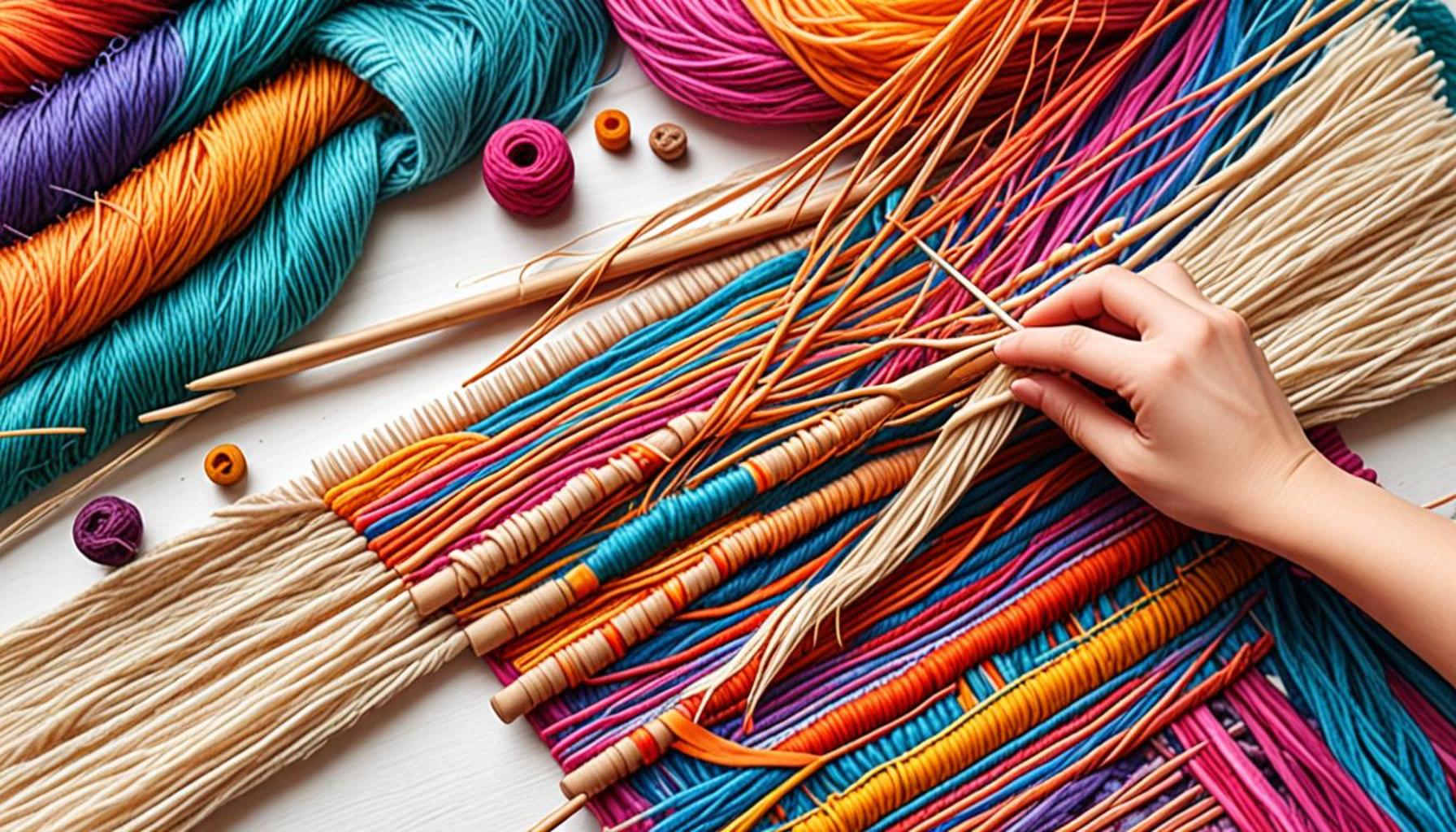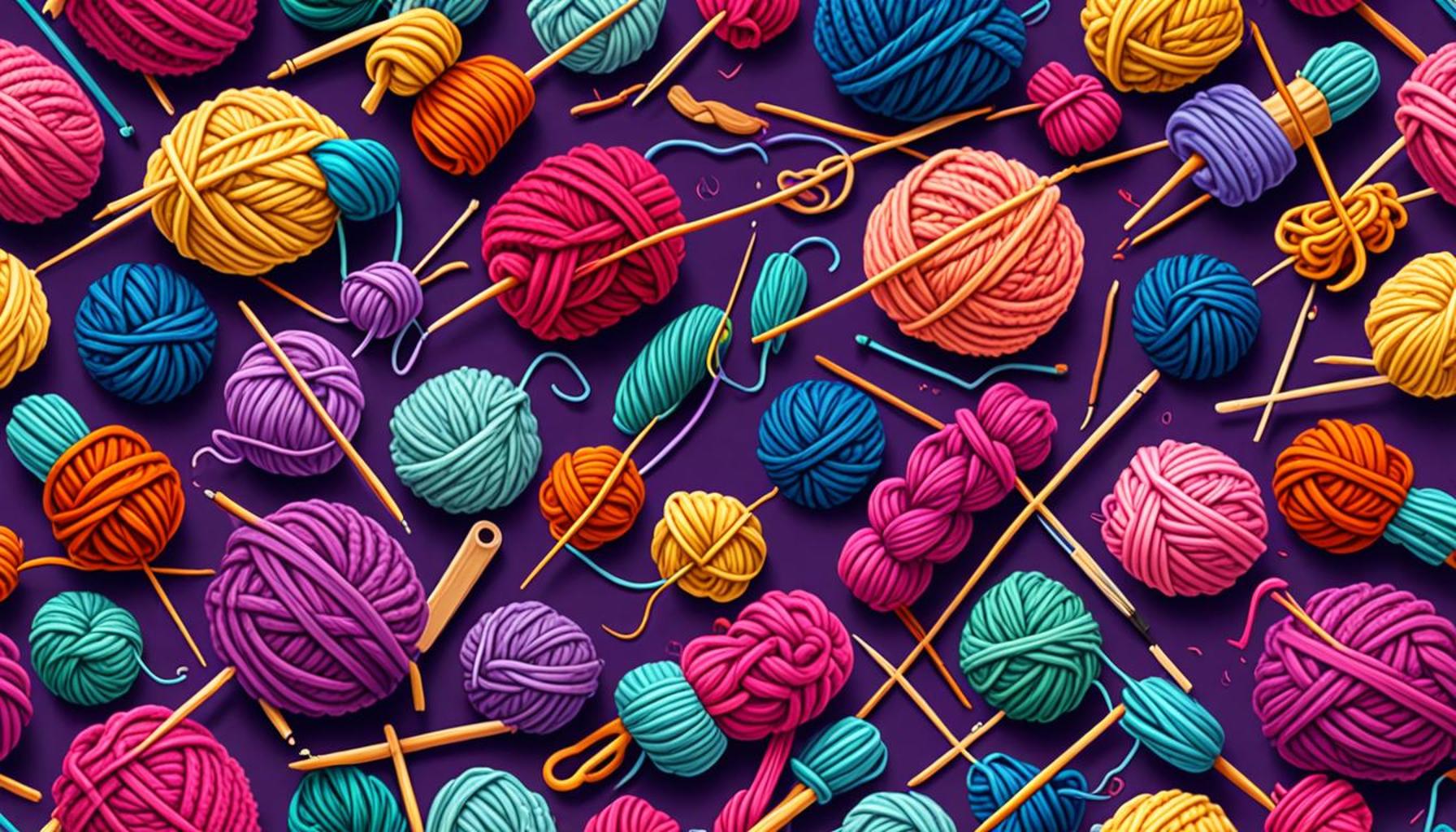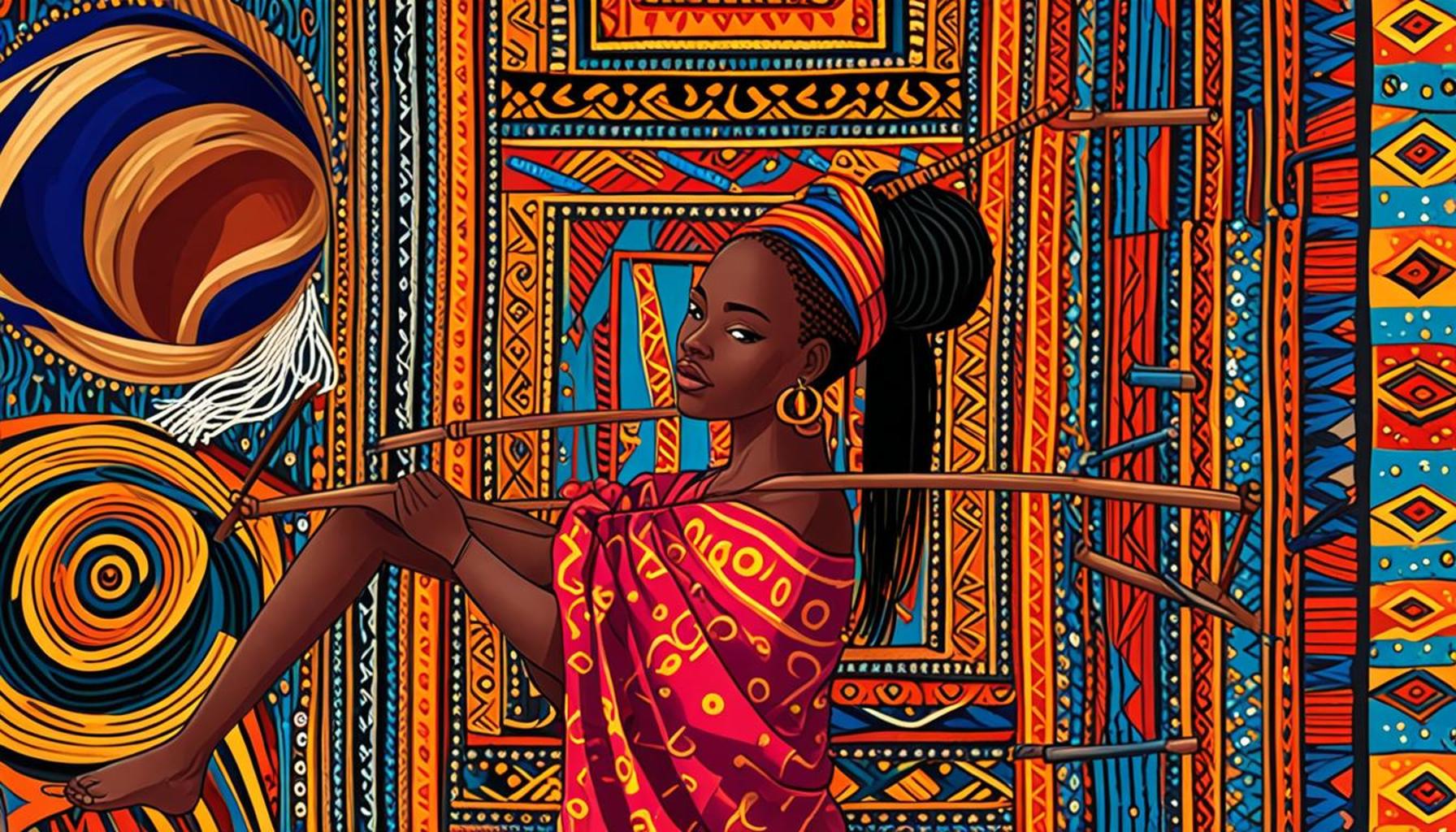Exploring Techniques of Traditional Nigerian Embroidery: An Art that Tells Stories
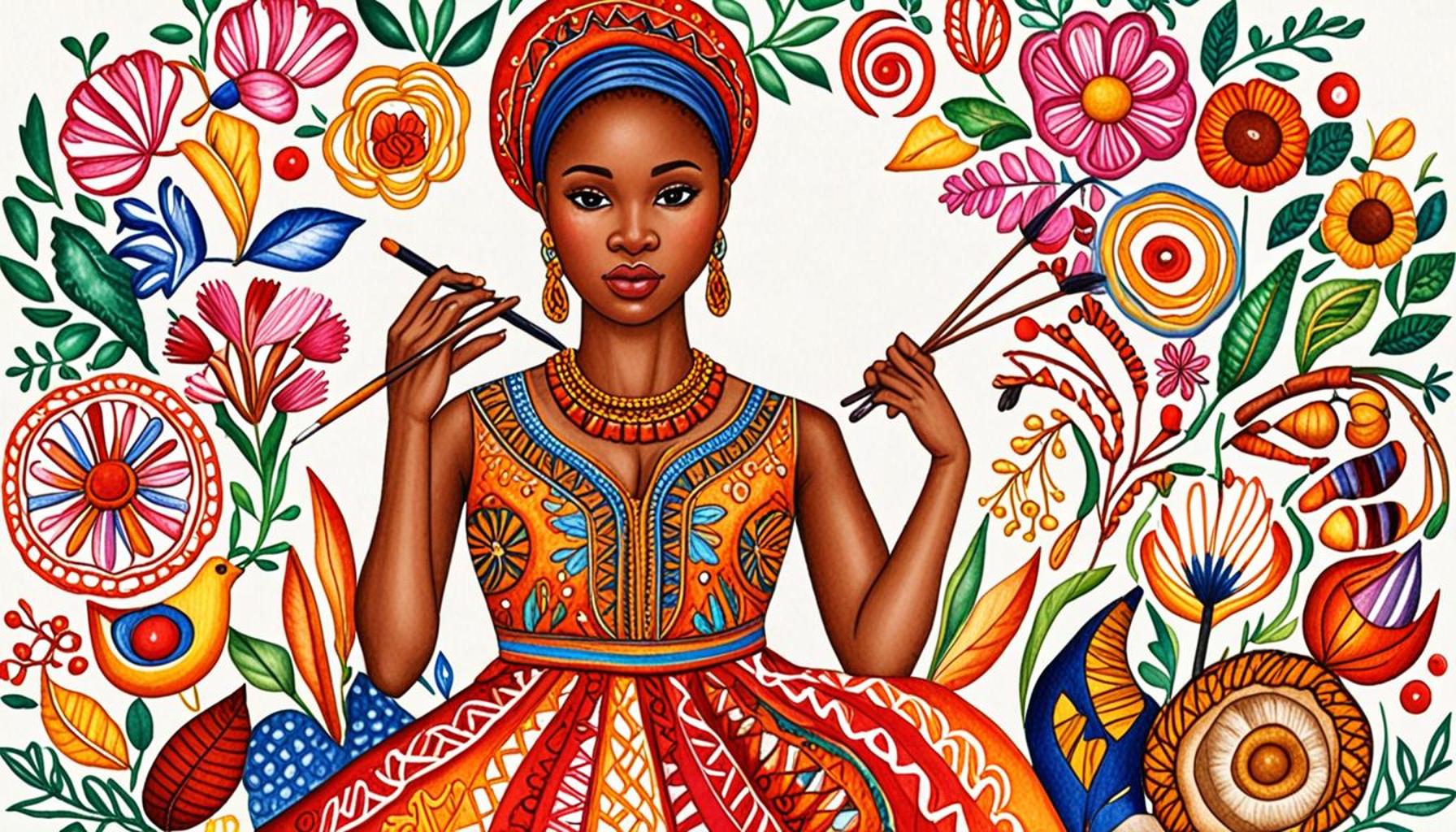
Unfolding the Significance of Traditional Nigerian Embroidery
The intricate world of traditional Nigerian embroidery serves not merely as an art form, but rather a deeply rooted language of expression that transcends mere words. Each stitch crafted by the hands of artisans tells a story, intertwining culture, history, and identity in a rich tapestry reflective of the diverse communities across Nigeria. The beauty of these techniques offers a glimpse into the past and present, and showcases the complex narratives woven into the fabric of everyday life.
Among the most notable techniques are:
- Adire: This versatile resist-dyeing technique from the Yoruba people exemplifies a masterful blend of tradition and innovation. Utilizing natural dyes from indigo plants, artisans create mesmerizing patterns that signify various meanings — from social status to rituals — serving not just as wearable art but as a storytelling medium.
- Kano embroidery: Known for its historical depth, this centuries-old craft originates from the northern regions of Nigeria. Characterized by intricate motifs and bright, contrasting colors, Kano embroidery often adorns traditional attire such as the ‘babanriga.’ The designs reflect both the artisans’ skill and the community’s cultural identity, showcasing patterns that have been passed down through generations.
- Ekiti and Ijebu stitching: Renowned for their elaborate detail and cultural symbolism, these styles feature geometric and floral motifs that tell stories of love, heritage, and social narratives. Similar to other forms of Nigerian embroidery, the work is often used during celebrations such as weddings and festivals, cementing their role in communal life.
The significance of these embroidery styles extends beyond aesthetics; they encapsulate the essence of Nigerian heritage with each thread narrating tales that resonate with themes of love, resilience, and joy. But why are these textile traditions crucial in today’s context? The answers are profound:
- Preservation of cultural identity: In an era of rapid globalization, these handcrafted arts preserve the unique cultural identities of various ethnic groups. As traditional practices fade, the revival of embroidery techniques offers a tangible connection to heritage.
- Empowerment of local artisans: By promoting and embracing these techniques, local artisans gain economic support, fostering community development and sustainable practices. Markets for handmade textiles not only boost local economies but also empower artisans by valuing their skills and traditions.
- Generational storytelling: The stories behind these stitches illuminate the human experience, intertwining past struggles and triumphs with present narratives. They evoke pride, curiosity, and a sense of belonging among younger generations, fostering a desire to continue these cultural practices.
As we explore these traditional embroidery techniques, we are invited to delve deeper into the artistry and ancestral meanings stitched into every piece. These embroidered works hold the potential to not only inspire contemporary artistic expression but also honor the rich past from which they emerge, paving the way for future generations to connect with their heritage.
RECOMMENDED: Check out this similar article
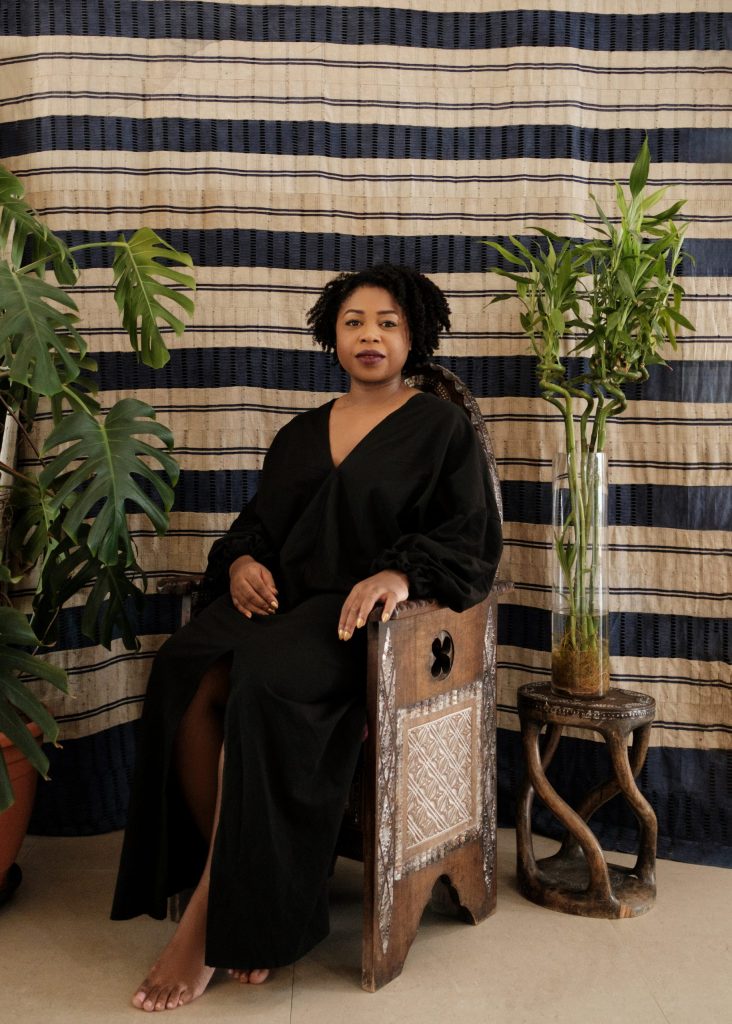
The Artistry Behind Traditional Nigerian Embroidery Techniques
Nigerian embroidery techniques stand as a testament to the nation’s rich cultural heritage, showcasing a vibrant interplay of creativity, tradition, and history. The appeal of these techniques lies not only in their visual beauty but also in their profound ability to convey stories and meanings rooted deeply in the lives and experiences of the people who create them. As we examine the intricate methods and processes involved in these traditional arts, we open the door to a deeper appreciation of the context and significance they hold within various Nigerian communities.
Adire: The Fabric of Yoruba Identity
Adire is a celebrated resist-dye technique that originated from the Yoruba people, and it embodies a profound connection with cultural identity. The process involves tying or stitching the fabric in specific patterns before dyeing it, resulting in breathtaking designs that are often symbolic. These fabrics are not just vibrant; they carry stories that may hint at social status, marriage rites, or spiritual beliefs. For instance, a certain adire pattern might signify a family’s lineage or express a particular aspiration — the indigo hues acting as a canvas for age-old tales. In contemporary fashion, the adire has found its way into modern designs, allowing artists to explore new dimensions while maintaining the essence of tradition.
The Rich Heritage of Kano Embroidery
Moving northward, we encounter Kano embroidery, a technique steeped in history and elegance. Originating from the Kano region, this embroidery method is distinguished by its intricate motifs, which often incorporate geometric patterns and vibrant colors. Traditionally, Kano embroidery adorns clothing such as the ‘babanriga,’ a flowing gown cherished for its cultural significance. The motifs crafted through this technique are often deeply imbued with meanings that celebrate community life and heritage. Young craftsmen and women, learning from their elders, perpetuate this art form, ensuring its survival through generations. Such revival efforts not only honor tradition but also cater to a growing market that values handmade artistry, showcasing the skill and precision of these artisans.
Echoes of Ekiti and Ijebu Stitching
The Ekiti and Ijebu stitching techniques further illustrate the storytelling capabilities of Nigerian embroidery. Characterized by detailed geometric and floral designs, these stitches encapsulate themes of love, heritage, and celebration, often showcased during significant life events such as weddings and festivals. The use of bright threads against rich fabrics makes these pieces not just clothing but veritable art forms. Craftsmen who specialize in these styles often infuse modern elements into their works while maintaining the symbolic nature of their creations, thereby appealing to both traditionalists and contemporary fashion enthusiasts. Each thread woven into these designs reflects a narrative that connects individuals with their backgrounds and traditions, allowing them to express their stories through textile art.
As we journey through the practices of traditional Nigerian embroidery, we recognize the emotional and cultural narratives interwoven into each piece. These techniques not only elevate artistic endeavors but also invite everyone to explore the profound connections they foster among people, heritage, and identity. With a resurgence of interest in local crafts and cultural expressions, the art of embroidery serves as a vital bridge between the past and the future, encouraging both appreciation and preservation of Nigeria’s rich tapestry of stories.
| Technique | Significance |
|---|---|
| Stitching Techniques | Nigerian traditional embroidery showcases various stitching styles, each narrating unique stories and cultural values. |
| Color Symbolism | Colors in embroidery often represent emotions or social status, enhancing the storytelling aspect of each piece. |
| Patterns and Motifs | Traditional patterns carry deep meanings, often linked to historical events or folklore, making the embroidery more than just art. |
| Regional Variations | Different regions in Nigeria exhibit distinct embroidery styles, each contributing to the rich tapestry of cultural diversity. |
The vibrant world of Nigerian embroidery stands as a testament to the country’s rich cultural heritage. Each technique employed in this art form is steeped in history and serves not only as a decorative craft but also as a medium for storytelling. The unique stitching techniques reveal the artistry and creativity of the artisans, while the color symbolism adds depth, allowing the stories woven into the fabric to resonate on a personal level.The intricate patterns and motifs often depict significant cultural narratives, making each embroidered piece a conversation starter. The variations from region to region further highlight Nigeria’s vast cultural landscape, providing a glimpse into local traditions and practices. Exploring these techniques not only appreciates the artistry involved but also honors the stories that they communicate, fostering a deeper understanding of Nigerian heritage.
ADDITIONAL INSIGHTS: Expand your understanding here
Symbolism and Storytelling in Nigerian Embroidery
The use of embroidery techniques in various Nigerian cultures transcends mere aesthetics; it serves as a language of its own, representing the stories, beliefs, and traditions woven into the fabric of society. Each stitch in these elaborate designs is imbued with meaning, offering glimpses into the lives and values of disparate communities. Understanding these symbols and their narratives is essential for those wishing to delve deeper into Nigeria’s intricate cultural tapestry.
Nuances of the Nsibidi and Uli Motifs
One particularly fascinating aspect of Nigerian embroidery is the incorporation of Nsibidi and Uli motifs. These ancient symbols, originating from the Efik and Ibibio people in southeastern Nigeria, are rich in linguistic and communicative potential. Nsibidi, which is a form of ideographic writing, integrates striking designs into embroidery, each representing specific concepts or significant events. Similarly, Uli, a traditional painting style among the Ibo people, also finds expression in embroidery. The decorative embroidery often reflects communal values and social commentary, offering profound insights into the cultural identity of the people. Many contemporary artists blend these motifs into their designs, creating pieces that honor tradition while telling new stories relevant to modern experiences.
Fulani Embroidery: A Window into Nomadic Life
In northern Nigeria, the Fulani embroidery is a vibrant showcase of nomadic culture. The Fulani people are renowned for their stunning needlework, characterized by intricate designs featuring animal motifs and vibrant color combinations. Often, these embroideries are seen on traditional attire, carrying personal significance and reflecting the wearer’s identity. The patterns tell tales of ancient nomadic lifestyles, illustrating the connection between the Fulani and their cattle, which remain central to their social structure and economy. With artisans blending traditional knowledge with contemporary flair, the unique symbols of Fulani embroidery continue to thrive, resonating with nostalgia and modern relevance.
The Evolution of Traditional Techniques in Contemporary Fashion
The evolving landscape of fashion in Nigeria has ushered in an exciting era where traditional embroidery techniques are being reimagined. Emerging Nigerian designers are increasingly turning to their cultural roots, fusing traditional practices with contemporary styles to create unique, marketable pieces that resonate with younger audiences. These designers acknowledge the stories and cultural significance embedded in their craft while also drawing from global fashion influences. This blend results in stylish garments that not only preserve traditional methods but also contribute to the growing recognition of Nigerian craftsmanship on international platforms.
Community Engagement and Workshops
Beyond fashion, initiatives aimed at preserving these traditional embroidery techniques are emerging across Nigeria. Community workshops and training programs offer insights into the artistry behind these crafts while encouraging younger generations to participate. Artisans often share their methods and stories, fostering a strong sense of community and love for tradition. Such initiatives are crucial, as they help sustain these cultural practices, enabling participants to understand and relish the narratives behind their heritage. Furthermore, they amplify the economic potential of these crafts, allowing artisans to earn a living while simultaneously preserving their cultural legacy.
As we dissect these rich traditions of Nigerian embroidery, it becomes clear that every thread and pattern serves a purpose, narrating stories that transcend generations. By embracing and adapting these techniques, Nigeria continues to weave together a vibrant heritage that is both historically significant and dynamically evolving. As the interest in traditional crafts grows, so too does the opportunity for shared storytelling and cultural expression through the art of embroidery.
CHECK OUT: Click here to explore more
Conclusion: Weaving Stories Through Traditional Nigerian Embroidery
In conclusion, the exploration of traditional Nigerian embroidery reveals a rich tapestry of cultural narratives that resonate deeply within the diverse communities of Nigeria. Each stitch not only reflects the artistry but also encapsulates profound stories and values that have been passed down through generations. The vibrant use of motifs such as Nsibidi and Uli illustrates the intricate connection between art and language, offering a visual means of communication that is both striking and meaningful.
The adaptability of embroidery techniques, as seen in the remarkable Fulani designs and the innovative approaches taken by contemporary Nigerian designers, highlights the dynamic nature of cultural expression in fashion. As these artisans blend traditional methods with modern trends, they ensure that the essence of their history survives amidst rapid globalization.
Furthermore, community engagement initiatives and workshops present a hopeful outlook for the preservation and continuation of these crafts, ensuring that the younger generations inherit not just skills, but a sense of pride in their heritage. As an art form that tells not only personal but collective stories, traditional Nigerian embroidery stands as a testament to the resilience and creativity of its people.
As interest in these age-old techniques continues to grow, the global audience is invited to appreciate the beauty and significance of Nigerian embroidery, prompting an ongoing dialogue about identity, culture, and artistic expression. By engaging with this art form, one not only supports the artisans who practice it but also contributes to the broader narrative of cultural appreciation and preservation.
